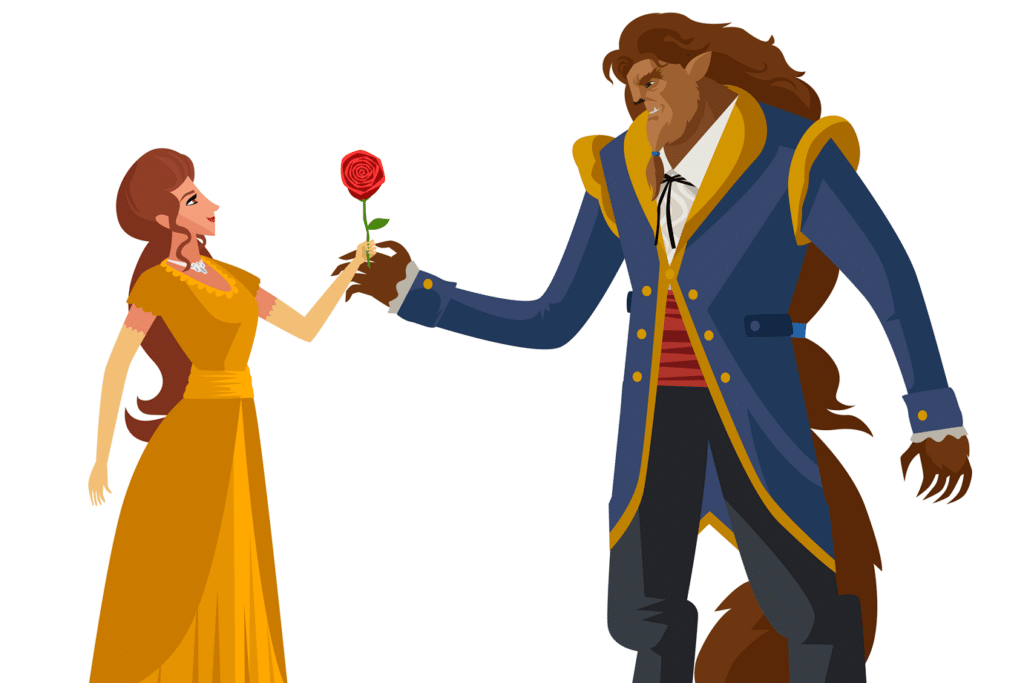Her bright blue eyes met mine as I slid into my seat. “You’re beautiful,’ she said in an innocent and matter of fact voice. I was both flattered and taken back, she must have been six or seven years old.
“Why thank you. You are beautiful too.” She nodded but seemed unsure. She looked back at the stage, at the dress made of roses projected on the curtain, as we awaited the start of Beauty and The Beast at Queensland Performing Art Center in Brisbane.
My 21-year-old daughter had wanted to go, and I managed to get tickets last week after their run was extended. My daughter had grown up with the story, but when it first appeared well before she was born, it troubled me. The narrative of a young woman who is trapped by an irascible beast in his castle and is expected to change him into a respectable man, always felt a bit off. Disney has not always gotten it right, but this one seemed more wrong than usual.
I tried to enjoy it. The production itself was spectacular, filled with some of the best talent and stage management I have seen here in Australia. Still, I winced as the Beast first raged at Belle, his booming voice filling the theater, his threatening presence looming over her. She recoiled and put her arm up in a defensive gesture. Everyone was silent, transfixed by his brutality, he was someone to be afraid of. He forbade her to leave, and she calmly accepted her fate, because she was saving her father, and ultimately him.
The Beast continued to have choleric outbursts throughout the musical.
“You must control your anger!” the other characters pleaded at various points, “Or we will never get out of here!” Yes, no one will get out of that hell, that turned people into objects, until the man/beast fundamentally changes. And it is Belle’s responsibility to change him, to calm him down, make him love her, and love him back, despite his fury. It’s all on her, to save him from his own worst nature.
This celebrated story seems more tone deaf than ever, as women are threatened and killed by real beasts (aka partners) every day in Australia, and domestic violence is called an epidemic by advocates and activists.
An estimated one in six women experience partner violence here. Horrific examples of men abusing or murdering their partners garner national news and politicians keep promising they will help. Sometimes they do, as in the latest federal budget.
But the ABC reported last week that frontline domestic and family violence services say the government has still not allocated enough funds for them, as women are being turned away from shelters and legal services may be wound back as well. There is clearly a lot of work to be done in the political sphere. And keeping the issue in the spotlight will continue to help.
But while we march and advocate for change, we still take our daughters to Beauty and the Beast, letting them ingest a story that has all the trappings of a domestic violence situation. In a way it legitimizes it, and promotes the entirely wrong message, “You can change a man from a beast into a prince if you can get him to love you.” And no, I am not letting my feminist leanings run wild, nor am I trying to ruin a perfectly good Disney story, or our young daughters’ innocent childhoods.
The government has said their aim is to end violence against women and children within a generation. As they look at policy, laws, and funding, we need to be responsible for the messages we give the women and girls out there, as well as the boys and men. Curating these messages can be hard, but it must be part of the strategy. We must reject the culture that creates and normalises the dynamics of domestic violence. Or at least call it out.
When I sat down in the theater, I wondered what the little girl next to me thought about her own beauty. When I stood up to leave, I wondered how she would view relationships, and what she thought her role in one would be. Despite the happy ending and the pretty dresses, I hoped she would never be Belle.

